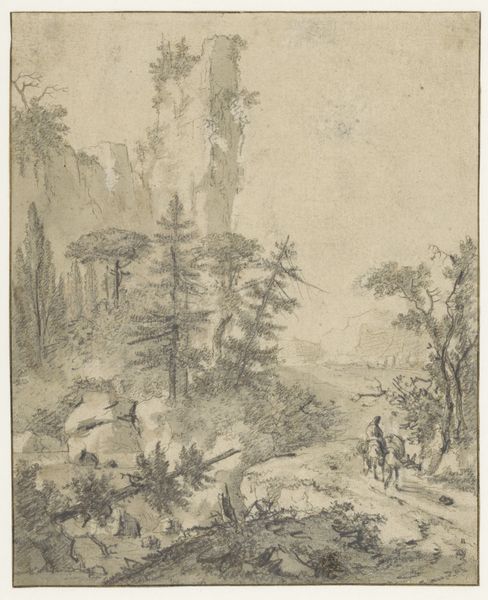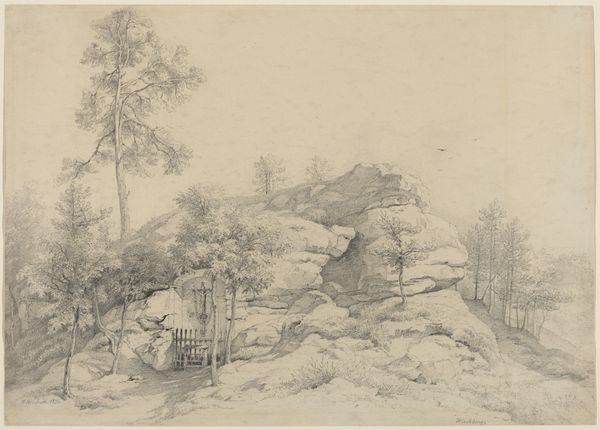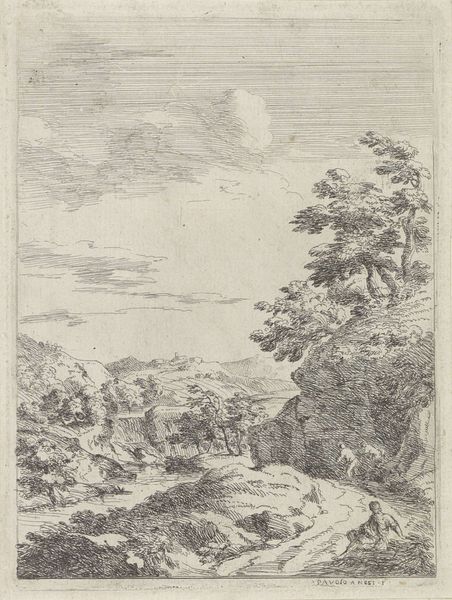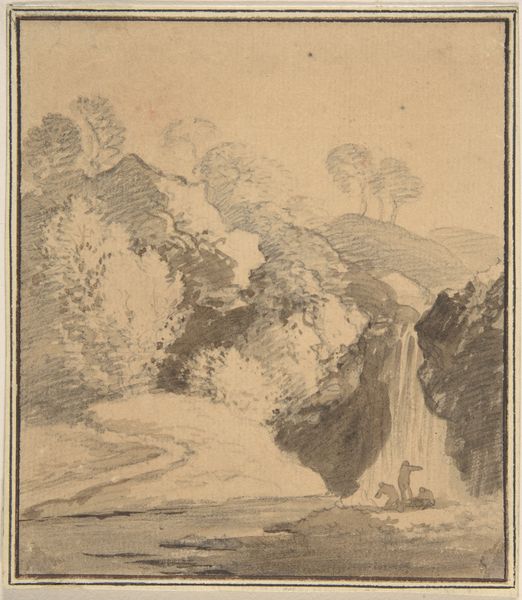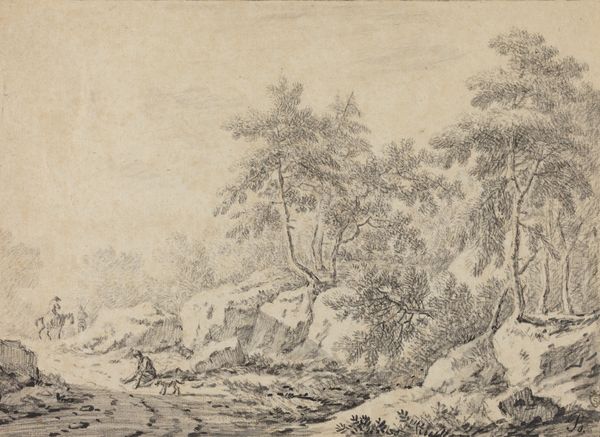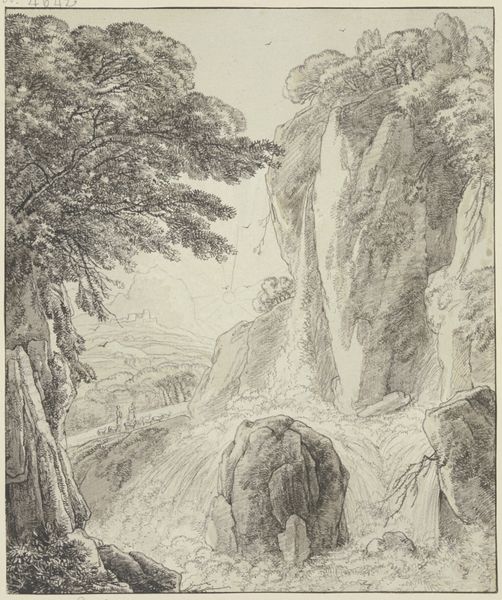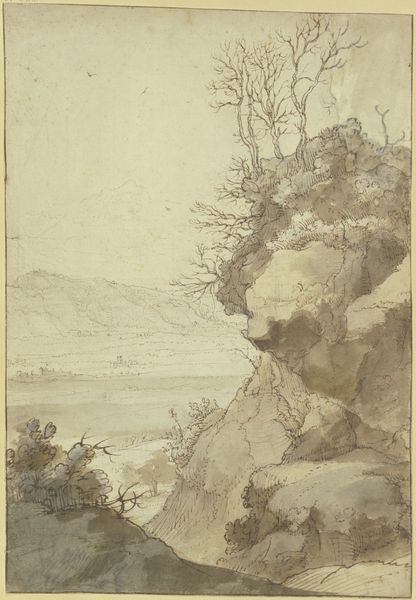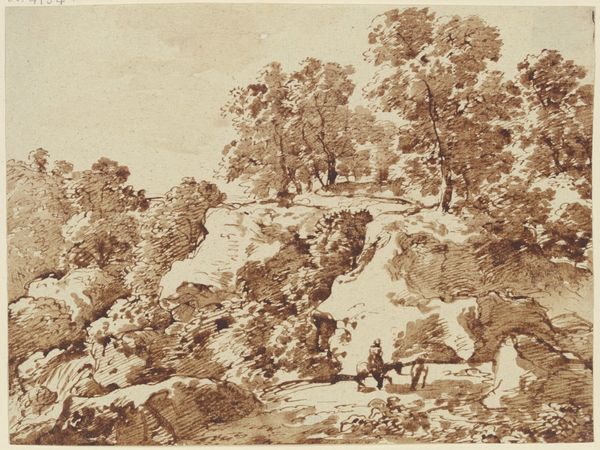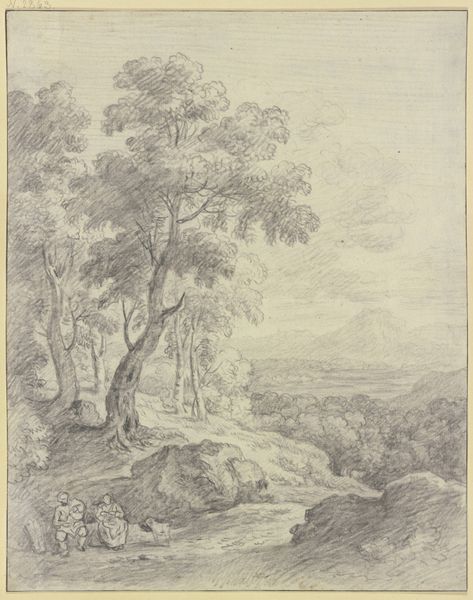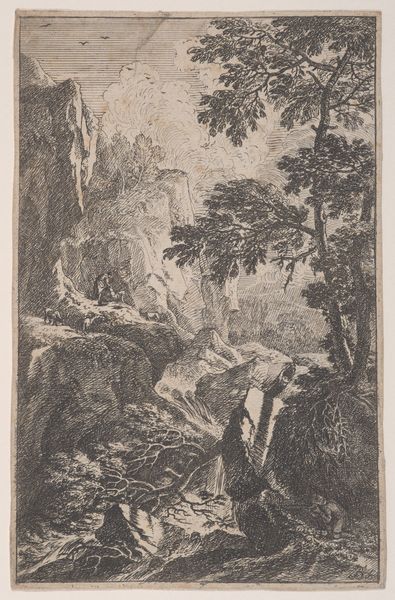
drawing, paper, ink
#
drawing
#
dutch-golden-age
#
landscape
#
etching
#
paper
#
ink
#
genre-painting
Dimensions: height 425 mm, width 334 mm
Copyright: Rijks Museum: Open Domain
Editor: This is "Groep berken bij een bergstroom", or "Group of Birches by a Mountain Stream" by Jan Both, created sometime between 1628 and 1652. It's an ink drawing on paper, and I find the use of monochrome so striking; it creates a somber mood, almost melancholic. What story does this landscape tell you? Curator: The subdued tones certainly lend it a contemplative air, don't they? Consider the socio-political context of the Dutch Golden Age. Landscapes became incredibly popular, not merely as backgrounds, but as subjects themselves, reflecting a growing sense of national identity and pride in the Dutch countryside. This drawing, however, deviates a little from that typical celebration. What do you notice about the stream itself, and the way Both has depicted it? Editor: I see how the stream is almost…hidden. It’s integrated into the landscape and its greyscale almost hides its purpose from being an integral part. Rather, its rocky landscape takes prevalence. Curator: Precisely. Unlike idealized depictions, there's a ruggedness, even a sense of the untamed here. Could this be a subtle commentary? Perhaps a reflection on the challenges and hardships faced, even within a time of prosperity? Remember that not all were benefiting equally during the Dutch Golden Age. The art market, the patrons, shaped what artists created and this style, in this tone, offers a counter narrative. Editor: That's a fascinating point. It makes me reconsider how landscape art was used, not just for celebration, but also for potential social commentary, almost a pushback against idyllic ideals of life. Curator: Indeed. And thinking about the materiality, it being an ink drawing implies maybe more intimate contemplation in representing nature as it truly felt. Art served so many public roles; and this perhaps provides a deeper political imagery to understand that public even more. Editor: Wow, I didn't see that initially, I now feel there are always undercurrents we must observe, in order to understand art and imagery completely. Thank you. Curator: Absolutely. Looking at art through history provides great meaning.
Comments
No comments
Be the first to comment and join the conversation on the ultimate creative platform.
